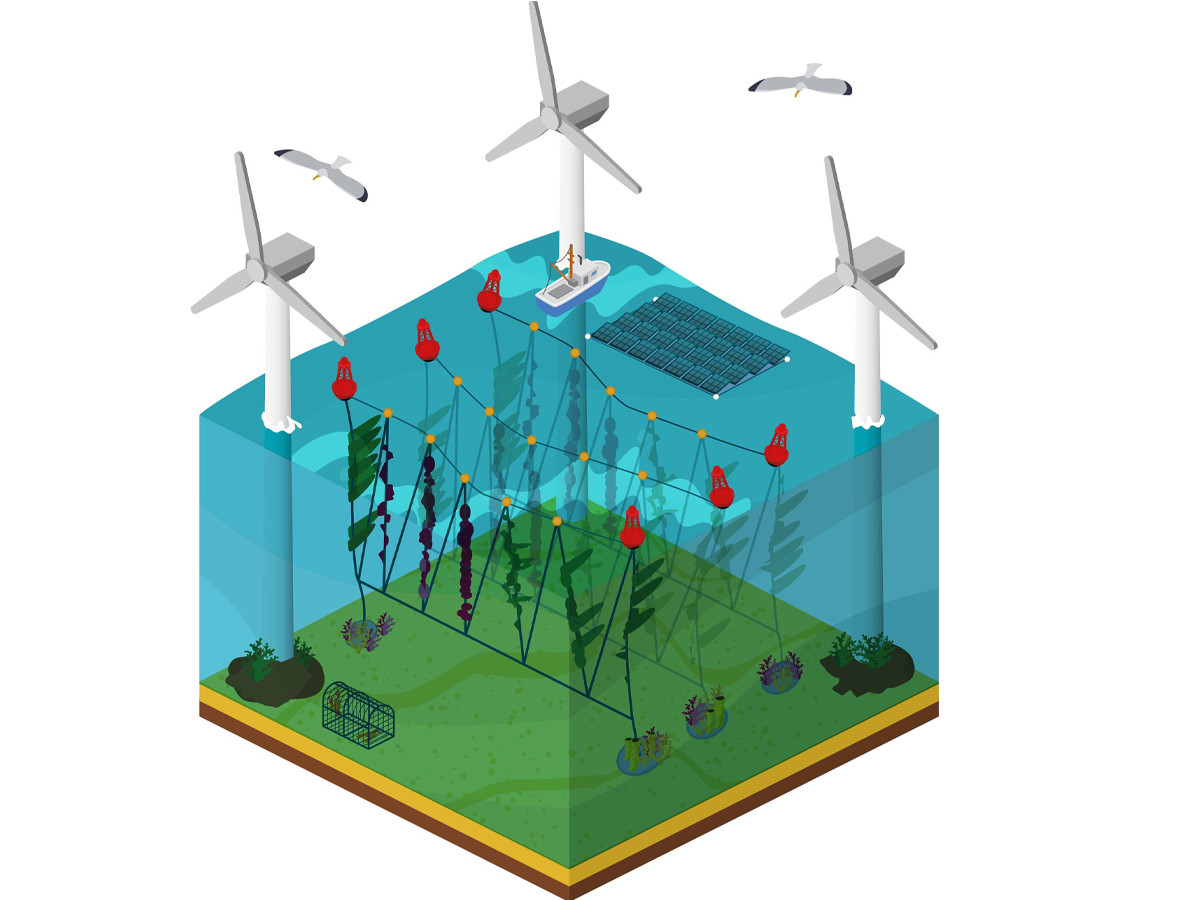
Europeans are eating more and more seaweed and this is leading to a strong growth of the European seaweed market. It currently accounts for €840 million, compared to a world market of €8.4 billion. By 2030, the turnover of the European seaweed market for food will increase to between €2 billion and €2.8 billion. And local production of seaweed in Europe is also promising. Today, Europe still imports almost all of its demand for seaweed from Asia, and its own cultivation is nil. But by 2030, locally cultivated seaweed could already meet 25 percent of European demand. In particular, offshore wind farms in the North Sea are suitable as locations for sustainable seaweed farms.
This is the conclusion of research commissioned by sector organization North Sea Farmers. Marlies Draisma, manager markets & applications of North Sea Farmers: "For the growth and professionalization of the European seaweed sector it is essential that we have reliable and well-substantiated data. We are convinced that this sustainable growth market with short production chains offers an important answer to the urgent demand for food with a positive impact on people and the environment. From 2030 onwards, the Dutch ambition alone is to realize 400 km2 of seaweed farms between offshore wind farms. This will save emissions of up to 1.6 million tons of CO2."
The entire production of seaweed for human consumption in Europe is currently marginal compared to the world market. With wild harvest and cultivation combined, Europe produces 300,000 tons of seaweed, which is less than 1 percent of the global volume of 32.4 million tons. However, European production is not nearly enough to meet European demand for seaweed. Europe takes 10 percent of global seaweed production, which has a total market value of €8.4 billion. Therefore, Europe imports a lot of seaweed from Asia.
The research, which consists of expert interviews, consumer surveys and desk research, shows that the European seaweed market for human consumption can grow from €840 million to €2.8 billion by 2030. Domestic seaweed production should reach a volume of 8 million tons by then. A growing awareness among European consumers around the impact of food on their own health and on the climate is a key driver for this. The popularity of plant-based foods has therefore been growing for years, and seaweed is a valuable application in this. Not only in dishes such as sushi, burgers and spaghetti, but also as a salt substitute, flavor enhancer, thickener and as an alternative to animal proteins.
Because of the world's growing population, climate change, and decline in biodiversity, governments are also looking for ways of sustainable food production. European government programs such as the Green Deal, Farm to Fork and research programs such as Interreg 2Seas Valgorize that stimulate this also offer growth opportunities for the European seaweed sector. Furthermore, European farmed seaweed has a good reputation due to its high quality. Buyers appreciate the safe and controllable production, as it meets consumers' need for local products and short chains.
By 2030, a quarter of the European seaweed market could come from locally cultivated seaweed from the North Sea. For the development of a sustainable and reliable supply chain, knowledge sharing on the applicability of European seaweed species and collaboration within the industry are essential. It is also necessary for a thriving industry to be consistent in the supply and quality of seaweed. And (potential) producers and processors need to be put in touch with each other in order to properly match supply and demand.
Source: North Sea Farmers